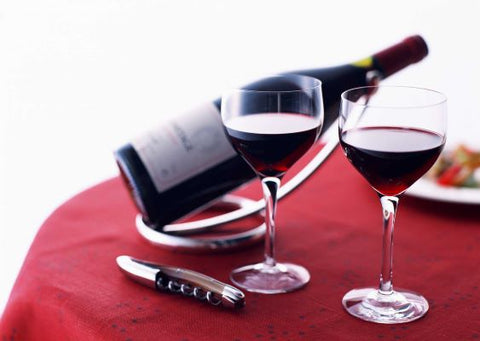
Preamble :
A little theoretical explanation is needed before getting into the practical aspects of wine tasting.
You should know that our taste, when we eat a food, or when we swallow a drink is in fact extremely limited: the only sensations revealed by the mouth are:
- The sweetness, the acidity, the bitterness, the salty, the umami,
- Drying up caused by tannins.
- The temperature (of the food, drink or that generated by alcohol).
- The sparkling.
- The viscosity.
- Texture and structure.
All the others " tastes Are in fact olfactory aromas : the taste of strawberry is in fact a scent of strawberry, that of vanilla is a scent of vanilla and so on.
Our sense of smell is able to detect 10,000 different flavors, even when they are present in infinitesimal quantities; in fact, when you drink or eat, it is the passage from the nose to the mouth that allows you to smell the aromas present in the mouth and therefore to "taste" what you swallow.
Once this is understood, we can move on to the practical consequences.
Wine service

1. Temperature
To taste the wine in the best conditions, it must be at its serving temperature in order to enhance the aromas
- Complex white wine: 11 to 15 ° C
- Light white wine, sparkling: 7 to 10 ° C
- Sweet, syrupy wine: 6 to 8 ° C
- Light red wine: 13 ° C
- Tannic and complex red wine: 16 to 18 ° C
2. Glasses
There are multiple glasses available depending on the type of wine. This topic can be the subject of an article on its own and that is not the point here.
My recommendation is to take the standard 12cl standard tasting glass which is an acceptable compromise in most cases. Here is an example of a glass type: Tasting glass 120 ml Arcoroc Viticole, without filling mark, 6 glasses .: Amazon.co.uk: Business, Industry & Science
It is necessary to pour between 2 and 3 cl of wine to be able to form a real opinion on the wine, each cl representing a sip.
3. Peak of wine
For all wines, it is recommended to taste them in their prime. The major world critics give indications of this period for their subscribers. Some reviews have free access: Falstaff, Bettane et Desseauve, Internationalwinereport… If you cannot find the answer in these guides or if you are not a subscriber, try a search engine, you will find the information in most of the case.
The most important thing is not to let the end of the maturity period pass because the wine would then be on the decline and it would be irreparably lost.
However, if the wine is too young, you can still enjoy it by aerating it several hours in advance. : pour it into a glass and wait 2 to 4 hours. This aeration will release the aromas and, if you do not benefit from all the complexity that the wine could have offered after several years in the cellar (tertiary aromas), you will capture all the primary (fruit) and secondary (wood) aromas, which will already give a good overview of the potential of the wine.
The continuation on January 15 ...
